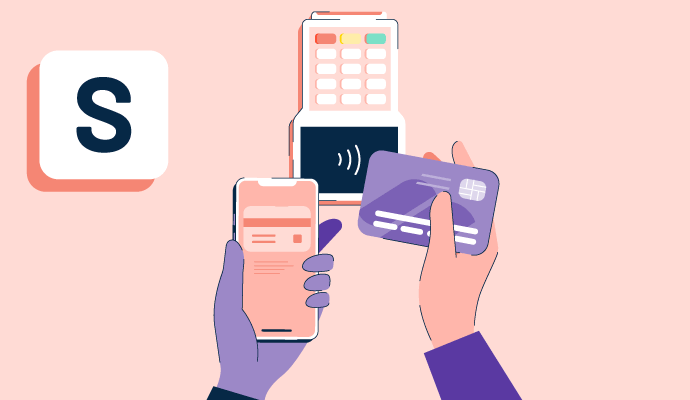What are split payments?
Split payment is a transaction method in installment payment software that accepts two or more payment methods for a single purchase. With this multi-payment mechanism, users pay using a combination of cash, digital wallet, and various cards (credit, debit, gift, store credit, and reward). Traditional brick and mortar stores offer split payment facilities, while online stores are still adopting them.
Types of split payment methods
Split payments ensure a speedy and seamless customer experience, allowing customers to split costs across the following payment methods:
- Credit card: Borrows funds for merchant payments
- Debit card: Uses checking account funds to pay for purchases
- Cash: Allows users to make payments using banknotes and coins
- Gift card: Funds transactions with preloaded money at select stores or within a particular store network
- Reward card: Spends cashback points or other incentives to fund purchases
- Store credit card: Uses borrowed funds for purchases at a retailer or group of related stores
- Check: Authorizes stores to draw funds from a payor’s bank account
Benefits of split payments
Split payments provide shoppers the flexibility to buy now, pay later (BNPL). The freedom to combine different payment options helps them:
- Pay over time
- Avoid negative cash flow impact
- Leverage interest-free credit offers
- Split payments with other contributors
Split payment methods reduce shopping cart abandonment and help retailers upsell. Offering flexible payment methods allows them to:
- Build customer loyalty
- Boost conversion rate
- Reduce checkout friction
- Accelerate repeat purchases
- Increase average order value
Split payment considerations
Split payment structures offer customers greater flexibility in funding big purchases but present e-commerce stores with many challenges. It’s best to consider the business and technical challenges before implementing a split payment method. Some of these challenges include:
- Verification: A merchant accepting two credit cards for a single payment must match the billing address with the card-issuing banks using address verification services (AVS). Implementing AVS requires dynamic coding and is a costly affair.
- Technical complications: Accepting more than one card for a single purchase requires retailers to install multiple systems. These systems make tax, fulfillment, promotion, and compliance more complicated and increase the chances of delivery delays.
- Merchant restrictions: Merchant restrictions prevent retailers from accepting multi-card payments exceeding the credit card service provider’s authorized limits. A merchant must comply with the maximum ticket size while accepting payments via multiple cards.
- Refunds: Customers funding purchases with multiple payment options have trouble claiming refunds and may need additional communication with banks and retailers.
Best practices for implementing split payment systems
Retail and e-commerce stores considering BNPL options are shifting toward split payments to offer customers a convenient and hassle-free shopping experience. Here are some best practices they should adopt to ensure a smooth implementation:
- Find the right solution. It’s necessary to analyze abandoned carts, shopping orders, and customer needs to determine the average order value (AOV) for split payment availability. The choice of split payment tool also depends on the annual percentage rate (APR) and a retailer’s payment terms.
- Inform the customer. Consumers make better purchase decisions when they know the payment options available. Therefore, it’s best to display accepted payment combinations throughout the purchasing journey with the help of window decals, shelf wobblers, and checkout counter cards.
- Educate employees. Familiarizing employees with split payment combinations helps customers get instant responses and make effortless purchase decisions.
Split payments vs. coupons
A coupon is a voucher with a code. Redeeming coupons during a transaction provides a specific benefit, such as a gift, cash refund, or product rebate. Retailers and e-commerce stores offer coupons to attract customers and market new products.
Coupons usually come in two formats:
- Paper coupons: These coupons usually accompany newspapers. Paper coupons use barcodes or unique identification (ID) numbers for verification.
- Electronic coupons: Retailers distribute these coupons via the internet, wireless application protocol (WAP) push, or short messaging service (SMS). Electronic coupons are also known as clipless or downloadable coupons.
Split payment is a transaction method, whereas a coupon acts as a mode of payment. Retailers use split payment at the end and coupons before the checkout process.

Sudipto Paul
Sudipto Paul is a Sr. Content Marketing Specialist at G2. With over five years of experience in SaaS content marketing, he creates helpful content that sparks conversations and drives actions. At G2, he writes in-depth IT infrastructure articles on topics like application server, data center management, hyperconverged infrastructure, and vector database. Sudipto received his MBA from Liverpool John Moores University. Connect with him on LinkedIn.





















